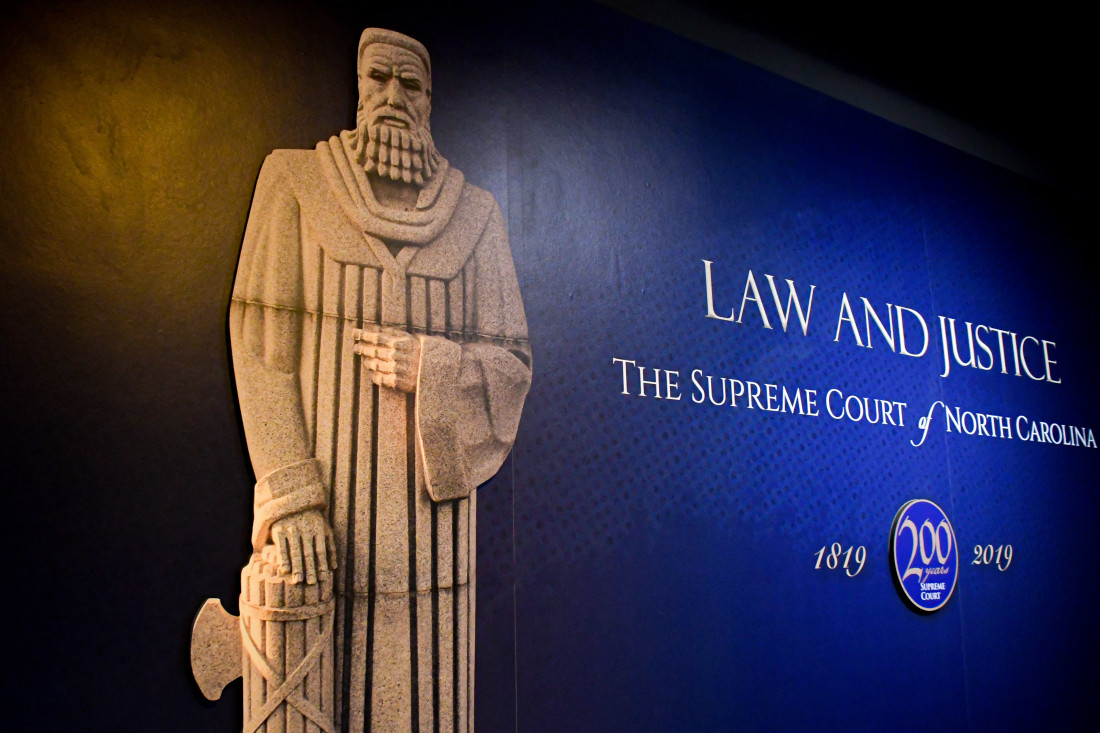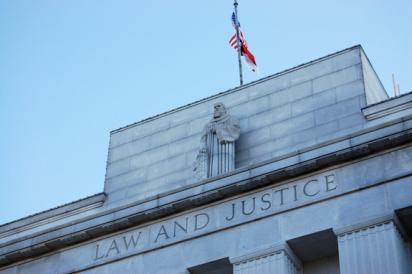Scott A. Miskimon: N.C. Supreme Court Celebrates 200 Years of Rich History
Appeared first on the Capitol Broadcasting Company opinion pages online.
Two hundred years ago Raleigh’s population was just 2,500. New Bern was North Carolina’s largest city with 3,600 people. North Carolinians lived and worked on farms, most voluntarily but many against their will, with slavery the dominant economic force in the state. North Carolina had no railroads or telegraphs. Roads as we know them simply did not exist. Capital punishment flourished and the death penalty was mandatory punishment for dozens of crimes. James Monroe was president and there were 20 stars on the U.S. flag.
As different as 1819 is from today, it’s a year to recall. It was then that the Supreme Court of North Carolina held its first session. Its founding marked a revolution in our state’s judiciary and the Court remains profoundly important to the people of North Carolina.
Two centuries of the Supreme Court’s rich history come alive in a museum exhibit celebrating its bicentennial. Today the North Carolina Museum of History opens its newest exhibit, Law and Justice: The Supreme Court of North Carolina, 1819-2019.

Few institutions in our state have a 200-year pedigree, traveling the path from quill pens to lap top computers. It’s been served by 101 justices who have issued more than 49,000 decisions. Raleigh has always been its home, but in two centuries the Court has been in seven different buildings, all across from or inside the Capitol.
The exhibit of historic photos and rare artifacts caps a year-long celebration of the Court’s founding, and 200 years of criminal and civil cases decided by the state’s highest court.
Designed with diverse audiences in mind, the exhibit is not just for judges and lawyers, but for everyone no matter the age, including school children.
The Law and Justice exhibit is more than a celebration of a venerated institution. It’s an opportunity to explore the issues that come before the Court and peer beyond the state Justice Building’s granite façade to understand how the Court does its work. Law and Justice also examines how the Court has evolved and adapted to changes in society, and in turn how it changed both the law and our state.
Because slavery thoroughly permeated life in antebellum North Carolina, the first decades of the Supreme Court’s case law are full of opinions deciding the fate of slaves and the rights and obligations of slaveholders. The exhibit highlights some of these decisions, including the 1819 case of State v. Jim, in which the Court reversed the conviction of a slave sentenced to death for breaking into a house and stealing a £5 bank note.
North Carolina and its Supreme Court have made a remarkable journey. Two hundred years ago blacks were enslaved and women were second-class citizens. In 2019, of the Court’s seven justices, three are women and three are African-Americans. Current Chief Justice Cheri Beasley is an African-American woman.
Law and Justice recognizes judicial pioneers: the first foreign-born immigrant, the first woman, the first African-American, and the first Catholic and Jewish justices.
Visitors to the History Museum will be able to immerse themselves in the issues that come before the Supreme Court, including capital punishment cases where the Court literally determines life and death.
The Court’s cases sweep far and broad. The range of issues includes everyday concerns -- disputes involving marriage and divorce, the termination of parental rights, child welfare, and contract and property rights.
Other issues affect the entire state -- matters as diverse as civil rights, environmental protection, and public education.
The Court determines whether laws passed by the General Assembly are proper or violate the state Constitution. And when a separation of powers case arises in a battle between the General Assembly and the governor, it’s the Supreme Court that decides the dispute.
Artifacts on display at the History Museum run the gamut from the personal to the intellectual to a grim piece of courtroom evidence. Law and Justice includes a robe worn by Susie Sharp, the Court’s first woman chief justice; ancient legal treatises used by the early justices including an 18th century set of Blackstone’s Commentaries on the Laws of England; and a weapon used in a 1945 prison murder that led to the killer’s execution after the Supreme Court upheld his conviction and sentence.
 Law and Justice takes its name from those same words carved in stone atop the Justice Building where the Supreme Court sits. Opened in 1940, it’s the seventh building in Raleigh to serve as the Court’s home. It’s crowned by a 12-foot tall statue of a mysterious-looking bearded man in a robe representing law and justice. For 80 years he’s stood 60 feet above Morgan Street directly across from the Capitol, unobserved as he hid in plain sight.
Law and Justice takes its name from those same words carved in stone atop the Justice Building where the Supreme Court sits. Opened in 1940, it’s the seventh building in Raleigh to serve as the Court’s home. It’s crowned by a 12-foot tall statue of a mysterious-looking bearded man in a robe representing law and justice. For 80 years he’s stood 60 feet above Morgan Street directly across from the Capitol, unobserved as he hid in plain sight.
A drone armed with a high-resolution camera recently zoomed to the top of the Justice Building and captured him in all his granite glory. His image has a prominent place in the Museum—both in the title panel for the exhibit as well as a cutout figure for children to take selfies with. The statue has no name, but that will soon change. The Museum is sponsoring a “Name That Statue!” contest – offering visiting school children the opportunity to submit a name. The Supreme Court justices will review the submissions and select a winner.
The Law and Justice exhibit is free, open to the public and on display through May 31, 2020.
Professionals
- Attorney


